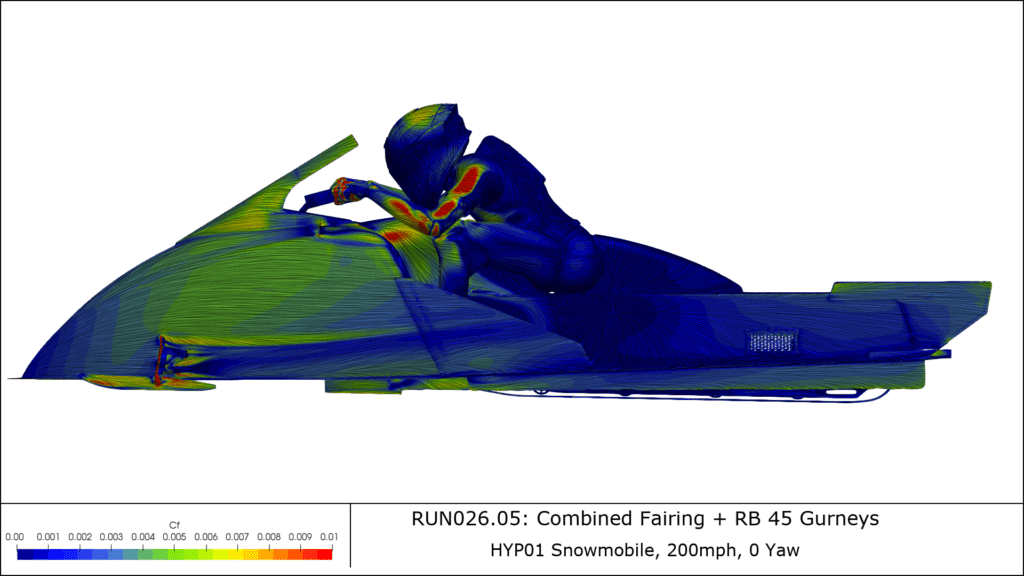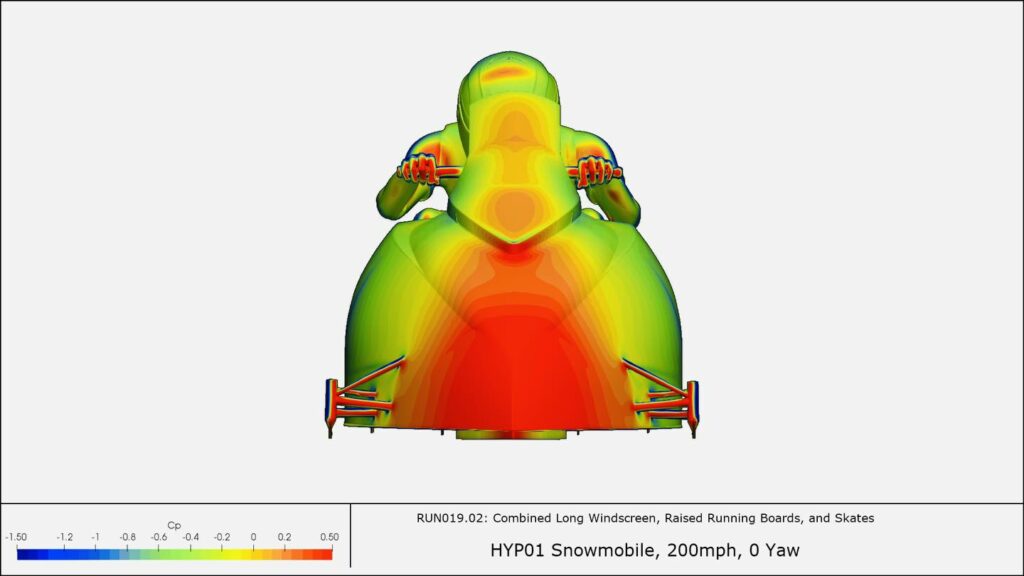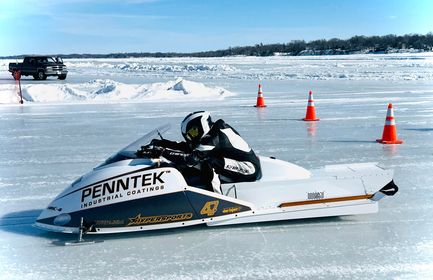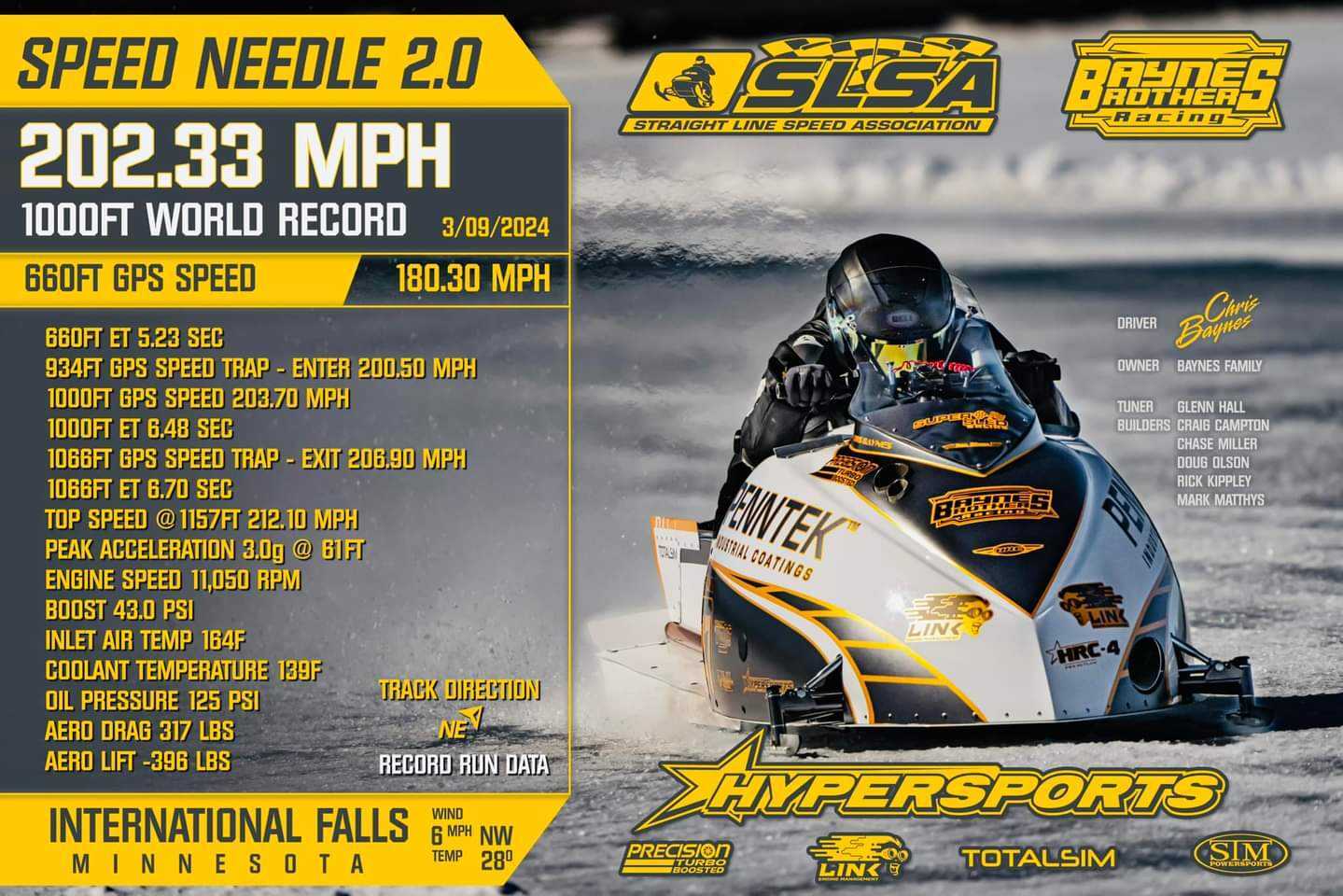TotalSim US & Hypersports Work Together to Beat Land Speed World Record
The Situation:
Hypersports, a Wisconsin-based builder of extreme high-horsepower, purpose-built snowmobiles, and engines, came to TotalSim with a goal of hitting 200 mph on their snowmobile, which if achieved, would break the land speed world record.
Client Challenge:
Hypersports felt they had the mechanical side down, but needed design solutions that would keep the snowmobile planted on the ground at very high speeds. To do this, you would need to add more downforce, which almost always creates more drag, defeating the ability to reach the speeds required for the world record.
Type of TotalSim Engagement:
Hypersports came to TotalSim after learning about our expertise and knowledge in reverse engineering. And, because of our reputation, they knew we would be the most qualified Computational Fluid Dynamics (CFD) consultant to help them achieve their goal.
What TotalSim did:
We began by scanning and reverse engineering Hypersport’s snowmobile from the previous season to create an “as built” model. This model captured how the fairing mounts to the chassis, how everything is positioned on the vehicle, as well as scanning the driver to have a representative person sitting on the simulation model. Adding the driver into the simulation helps address the comfort and safety of the snowmobile.
Based on the scan and geometry of the initial snowmobile design, we reported 156 HP of drag, 105 lbs. of downforce, and 26 lbs. of lift on the driver’s helmet while driving 200 mph. Within several iterations, we were able to nearly quadruple the downforce up to 370 lbs. of downforce while only adding 1.5 HP of drag (+1% drag). We also were able to modify the design so the driver’s helmet only had 7 lbs. of lift at the end which is much more comfortable.
All these changes came from redrawing the fairing, extending the windscreen, redesigning the bottom of the snowmobile to create downforce, and some special treatment at the back of the snowmobile. The skis also were swapped out for knife blade models to reduce drag and help the bottom of the snowmobile maintain the downforce it was generating.



Results:
In the end, we were able to nearly quadruple the downforce with only a 1% increase in drag, helping Hypersports achieve their goal of breaking the world record with this new snowmobile in the 1,000-foot sprint class.
Record Breaking Update:
TotalSim wants to wish a huge congratulations to our friends at Hypersports, the Baynes Brothers Racing Team and driver Chris Baynes who made history March 2024 in International Snowmobile Racing, setting a new world record for top speed over 1000 feet. With a groundbreaking run of 202.33 mph aboard the custom-built "Speed Needle 2.0" sled, they've pushed the boundaries of snowmobile racing.




Learn more about the ways TotalSim can help you overcome your aerodynamic challenges
*What is CFD?
Computational fluid dynamics (CFD) is a branch of fluid mechanics that uses computer numerical analysis and data structures to analyze and solve problems that involve fluid flows, typically solved on large supercomputers. Fluid mechanics plays a significant role in the engineering process when developing new designs. Analyzing the aerodynamic and thermal qualities of a product using experimentation is a well-established approach however experimentation can be costly, limiting, time-consuming, and difficult to execute especially on a large scale. Progression of computing power has allowed the field of CFD to prosper acting as a complement to physical testing and in some cases replacing it. CFD is the science of predicting fluid flow, heat transfer, mass transfer, chemical reactions, and other flow properties by solving governing fluid flow equations using numerical methods. Across the industry, CFD is routinely used to drive product development, troubleshoot issues, study and optimize new designs and concepts, and map performance. CFD methods are heavily used across many disciplines with motorsports being a leading proponent.
